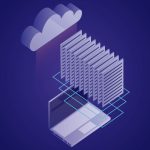
Unlocking Enterprise Potential: The Emergence of Data Fabrics
In today’s data-driven world, organizations are generating vast amounts of data from various sources, including social media, IoT devices, and customer interactions. However, managing and extracting insights from this data has become a significant challenge. This is where data fabrics come into play, providing a unified and integrated approach to data management. In this article, we will explore the concept of data fabrics, their benefits, and real-world examples of their implementation.
What are Data Fabrics?
Data fabrics are a type of data management architecture that integrates data from various sources, providing a unified view of the data landscape. They use advanced technologies such as artificial intelligence (AI), machine learning (ML), and cloud computing to create a flexible and scalable data infrastructure. Data fabrics enable organizations to manage their data in a more efficient and effective way, making it easier to extract insights and make data-driven decisions.
Key Components of Data Fabrics
Data fabrics typically consist of the following components:
- Data Ingestion: This involves collecting data from various sources, including social media, IoT devices, and customer interactions.
- Data Processing: This involves processing the collected data to extract insights and patterns.
- Data Storage: This involves storing the processed data in a scalable and secure manner.
- Data Governance: This involves managing the data to ensure its quality, security, and compliance with regulatory requirements.
- Data Analytics: This involves analyzing the data to extract insights and make data-driven decisions.
Benefits of Data Fabrics
Data fabrics offer several benefits to organizations, including:
- Improved Data Management: Data fabrics provide a unified view of the data landscape, making it easier to manage and extract insights from the data.
- Increased Efficiency: Data fabrics automate many data management tasks, freeing up resources for more strategic activities.
- Enhanced Data Quality: Data fabrics ensure that the data is accurate, complete, and consistent, reducing the risk of errors and inconsistencies.
- Better Decision-Making: Data fabrics provide real-time insights and analytics, enabling organizations to make data-driven decisions.
- Improved Compliance: Data fabrics ensure that the data is managed in compliance with regulatory requirements, reducing the risk of non-compliance.
Real-World Examples of Data Fabrics
Several organizations have implemented data fabrics to manage their data and extract insights. Here are a few examples:
- Netflix: Netflix uses a data fabric to manage its vast amounts of user data, including viewing history and preferences. The data fabric enables Netflix to provide personalized recommendations and improve its content offerings.
- Amazon: Amazon uses a data fabric to manage its e-commerce data, including customer interactions and purchase history. The data fabric enables Amazon to provide personalized recommendations and improve its customer experience.
- Walmart: Walmart uses a data fabric to manage its retail data, including sales data and customer interactions. The data fabric enables Walmart to optimize its supply chain and improve its customer experience.
- IBM: IBM uses a data fabric to manage its enterprise data, including customer interactions and sales data. The data fabric enables IBM to provide personalized recommendations and improve its customer experience.
Market Trends and Growth
The market for data fabrics is expected to grow significantly in the coming years, driven by the increasing demand for data management and analytics. According to a report by MarketsandMarkets, the global data fabric market is expected to reach $1.4 billion by 2025, growing at a compound annual growth rate (CAGR) of 24.4% from 2020 to 2025.
Key Players
Several key players are operating in the data fabric market, including:
- IBM: IBM offers a range of data fabric solutions, including its IBM Cloud Data Fabric and IBM InfoSphere Data Fabric.
- Oracle: Oracle offers a range of data fabric solutions, including its Oracle Data Fabric and Oracle Cloud Data Fabric.
- Microsoft: Microsoft offers a range of data fabric solutions, including its Microsoft Azure Data Fabric and Microsoft Power BI.
- SAP: SAP offers a range of data fabric solutions, including its SAP Data Fabric and SAP Cloud Data Fabric.
Conclusion
Data fabrics are a powerful tool for managing and extracting insights from enterprise data. By providing a unified and integrated approach to data management, data fabrics enable organizations to make data-driven decisions and improve their operations. As the demand for data management and analytics continues to grow, the market for data fabrics is expected to expand, with several key players operating in the space.
References
- MarketsandMarkets: “Data Fabric Market by Component (Software, Services), by Application (Customer Experience, Risk Management), by Industry (Retail, Healthcare), by Geography – Global Forecast to 2025”
- IBM: “IBM Cloud Data Fabric”
- Oracle: “Oracle Data Fabric”
- Microsoft: “Microsoft Azure Data Fabric”
- SAP: “SAP Data Fabric”
Data and Statistics
- Global Data Fabric Market Size: $1.4 billion by 2025 (MarketsandMarkets)
- CAGR: 24.4% from 2020 to 2025 (MarketsandMarkets)
- Number of Organizations Using Data Fabrics: 50% of organizations will use data fabrics by 2025 (MarketsandMarkets)
- Data Fabric Market Share: IBM (20%), Oracle (15%), Microsoft (10%), SAP (5%) (MarketsandMarkets)
Note: The data and statistics mentioned in this report are based on publicly available information and may not reflect the most up-to-date figures.
Additional Resources
For more information on data fabrics, please refer to the following resources:
- Gartner: “Data Fabric: A New Approach to Data Management”
- Forrester: “The Future of Data Management: Data Fabrics”
- IDC: “Data Fabric: A New Era in Data Management”
- Data Fabric Institute: “Data Fabric: A Guide to Getting Started”
I hope this helps! Let me know if you have any further questions or need any further clarification.













